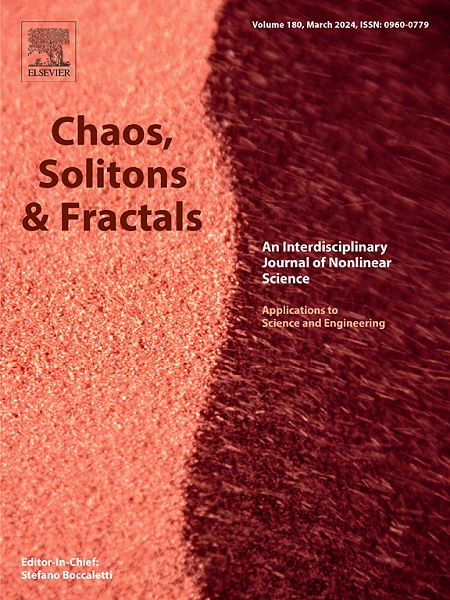A contrastive learning framework of graph reconstruction and hypergraph learning for key node identification
IF 5.3
1区 数学
Q1 MATHEMATICS, INTERDISCIPLINARY APPLICATIONS
引用次数: 0
Abstract
With the emergence of complex networks in various domains, the key node identification has become one of the critical issues that needs to be studied. Traditional index methods typically focus on single structural information, while existing data-driven approaches often rely solely on the intrinsic lower-order features of nodes. However, assessing the importance of nodes requires a comprehensive consideration of both network structures and higher-order features from multiple perspectives. To address these challenges, this paper proposes a novel deep learning framework based on Graph Reconstruction and Hypergraph Contrastive Learning, termed GRHCL. The GRHCL method constructs hypergraph structures from original graphs using random walks, followed by leveraging graph reconstruction and hypergraph learning methods to capture both structural and higher-order embedding features of nodes. Positive and negative node pairs are then constructed across different views for contrastive learning. Finally, the model is trained using a training sample set obtained through a clustering sampling strategy, along with a joint loss function. Comparative experiments against various baseline methods demonstrate that the GRHCL method achieves superior predictive performance with smaller training sets, improving accuracy by over 5% on some datasets compared to the next best-performing method.
一种基于图重构和超图学习的关键节点识别对比学习框架
随着复杂网络在各个领域的出现,关键节点的识别已成为需要研究的关键问题之一。传统的索引方法通常侧重于单个结构信息,而现有的数据驱动方法通常仅依赖于节点固有的低阶特征。然而,评估节点的重要性需要从多个角度综合考虑网络结构和高阶特征。为了解决这些挑战,本文提出了一种基于图重构和超图对比学习的新型深度学习框架,称为GRHCL。GRHCL方法使用随机漫步从原始图中构建超图结构,然后利用图重建和超图学习方法捕获节点的结构和高阶嵌入特征。然后在不同的视图上构建正、负节点对进行对比学习。最后,使用聚类采样策略获得的训练样本集以及联合损失函数对模型进行训练。与各种基线方法的对比实验表明,GRHCL方法在较小的训练集上取得了优越的预测性能,在某些数据集上,与性能第二好的方法相比,准确率提高了5%以上。
本文章由计算机程序翻译,如有差异,请以英文原文为准。
求助全文
约1分钟内获得全文
求助全文
来源期刊

Chaos Solitons & Fractals
物理-数学跨学科应用
CiteScore
13.20
自引率
10.30%
发文量
1087
审稿时长
9 months
期刊介绍:
Chaos, Solitons & Fractals strives to establish itself as a premier journal in the interdisciplinary realm of Nonlinear Science, Non-equilibrium, and Complex Phenomena. It welcomes submissions covering a broad spectrum of topics within this field, including dynamics, non-equilibrium processes in physics, chemistry, and geophysics, complex matter and networks, mathematical models, computational biology, applications to quantum and mesoscopic phenomena, fluctuations and random processes, self-organization, and social phenomena.
 求助内容:
求助内容: 应助结果提醒方式:
应助结果提醒方式:


